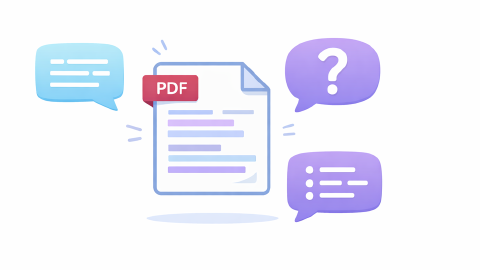What is a Differential Diagnosis? Complete Guide in 2026
This guide dives into what a differential diagnosis is and how to use it to improve patient treatment in 2026.
Every healthcare professional has faced it: a patient presents with vague or overlapping symptoms, and there's no clear diagnosis right away.
If this happens to you, you need a solid differential to avoid missing something serious. Whether you're in the ED, clinic, or wards, building a differential diagnosis is one of the most critical skills in patient care.
A differential diagnosis is how you organize your thinking, rule out dangerous conditions, and figure out what’s most likely.
In this article, we'll walk through what a differential diagnosis is, why it matters, and how you can refine your process, especially with the help of AI tools in 2026.
What is a Differential Diagnosis? Meaning + Definition
A differential diagnosis is a standard part of clinical reasoning used to determine the most likely cause of a patient’s symptoms. It involves listing out potential conditions, then ruling them in or out using history, physical exams, and diagnostic tests.
Differential diagnoses are a key step in avoiding missed or incorrect diagnoses, especially when symptoms could point to different conditions or causes of symptoms.
Meaning:
- A methodical way to think through different possible causes of a patient’s symptoms before settling on the most likely one.
Definition:
- A list of potential diagnoses that are considered and narrowed down based on clinical findings and diagnostic results.
Differential diagnoses are used in nearly every patient encounter, especially when symptoms are nonspecific or complex. It’s important in both primary care and acute care settings, as it helps clinicians avoid misdiagnosis and make informed treatment decisions.
What Do Differential Diagnoses Do?
Differential diagnoses do more than guide clinical decision-making: they also support the documentation and administrative side of care. Differential diagnoses help ensure that your reasoning is clearly recorded and that treatments are backed by medical necessity.
Here’s what differential diagnoses help you do:
Identify Diagnoses - Build a clinical foundation for the most likely and relevant conditions based on the patient’s presentation.
Establish Medical Necessity - Show why testing, procedures, or specialist referrals are appropriate for the patient’s symptoms.
Support Skilled Care Justification - Justify ongoing evaluation, treatment plans, or interventions that require professional oversight.
Create a Measurable Prognosis - Provide a clearer picture of expected outcomes and inform follow-up decisions.
Map ICD and CPT Codes - Ensure accurate coding for reimbursement, data tracking, and compliance.
Within a differential diagnosis, each potential diagnosis includes a few parameters that either support or oppose the diagnosis. Each potential diagnosis can include:
- Positives (supports the diagnosis)
- Negatives (doesn't support the diagnosis)
- Red flags (things to check for to confirm/deny the diagnosis).
These are things that you can use to help you eventually reach your final diagnosis.
How Does Differential Diagnoses Help Determine Appropriate Treatments?
Differential diagnoses are more than just a diagnostic step, they directly impacts treatment planning. When you’ve considered and ruled out key possibilities, you’re more likely to choose interventions that are both safe and effective.
Here's how a differential diagnosis can help determine the appropriate treatment for patients:
It improves diagnostic accuracy - Reduces the risk of treating the wrong condition by ensuring a thorough evaluation.
It helps guide targeted testing - Helps clinicians avoid unnecessary tests and focus on those that clarify the clinical picture.
It supports evidence-based care - Aligns treatment plans with the most probable diagnosis, using guidelines and best practices.
It prevents treatment delays - Prioritizes urgent conditions and reduces backtracking caused by misdiagnosis.
It enhances patient communication - Allows clinicians to explain options clearly and build trust through transparent reasoning.
Using differential diagnoses in your care leads to more confident decisions and better outcomes across various clinical settings.
How to Create a Differential Diagnosis With AI
If you are tired of spending too much time on paperwork and analysis, and not enough time with patients, you should consider using AI to streamline repetitive workflows. AI in healthcare is growing more popular, as it helps save time and allow you to focus on patients.
To create a differential diagnosis with AI, give AI Blaze a try.
AI Blaze is your personal AI assistant that helps you create differential diagnoses, rewrite and summarize notes, proofread them, and help you save time so you can focus on your patients.
AI Blaze works on any website or EMR and helps you streamline your documentation, no integration required.
Features
Create differential diagnoses with AI - AI Blaze helps you review symptoms and create differential diagnoses in any situation, right in your EMR.
Ask follow-up questions to get the right diagnosis - AI Blaze's chat feature allows you to ask follow-up questions and either rule out or confirm specific diagnoses.
Rewrite notes & messages with AI - Rewrite rough clinical notes or messages to patients to turn them into clear, compliant notes in seconds.
Summarize data with AI - AI Blaze helps you quickly summarize lab data or even existing notes in just a few seconds.
AI Blaze works anywhere - AI Blaze works in any EMR, no integration required.
Use AI Blaze to automate workflows in any EMR.
Differential Diagnosis FAQ
Diagnoses vs Diagnosis: Which to Use?
"Diagnosis" is singular. "Diagnoses" is plural. Use “diagnosis” when referring to one condition and “diagnoses” when discussing multiple conditions.
DDx Medical Abbreviation Meaning in Medical Terms
DDx stands for “differential diagnosis.” It’s shorthand used in clinical documentation and conversations to refer to a list of possible conditions.
Prognosis vs Diagnosis: Which to Use?
A diagnosis explains what condition the patient has. A prognosis describes how the condition is expected to progress and what the likely outcome will be.
Provisional Diagnosis Meaning
A provisional diagnosis is a working diagnosis based on the current evidence that is made before all tests are complete. It helps guide initial treatment while waiting for confirmation.
Differential Diagnosis Examples
Differential diagnoses are most useful when applied to real clinical situations. The goal is to think broadly at first, then narrow your list as more data comes in.
Here are examples of common complaints and how you might approach building a differential. Each example includes several possible conditions, along with supporting findings, negatives, and red flags for each.
Use AI Blaze to automate workflows in any EMR.
Chest Pain Differential Diagnosis
Chest pain is a high-risk complaint that requires ruling out life-threatening conditions first.
Abdominal Pain Differential Diagnosis
Abdominal pain is a common complaint with a wide differential that depends on location and patient history.
Maculopapular Rash Differential Diagnosis
Maculopapular rashes can result from infections, medications, or autoimmune processes.
Headache Differential Diagnosis
Headache workups rely heavily on history and red flags to rule out serious causes.
Knee Pain Differential Diagnosis
Knee pain can be due to acute injury, overuse, infection, or systemic disease.
Shoulder Pain Differential Diagnosis
Shoulder pain is usually musculoskeletal, but it’s important to rule out referred or systemic causes.
Appendicitis Differential Diagnosis
Appendicitis can mimic several other causes of RLQ pain, especially in women.
Neck Pain Differential Diagnosis
Neck pain is often mechanical but can point to serious pathology.
Use AI Blaze to automate workflows in any EMR.
Epigastric Pain Differential Diagnosis
Epigastric pain can stem from gastric, biliary, or cardiac sources.
Anemia Differential Diagnosis
Anemia requires identifying the underlying cause to treat effectively.
A Key Factor of Clinical Decision-Making
Differential diagnosis is still one of the most important parts of clinical decision-making. It helps you think through uncertainty, rule out serious conditions, and make sure your treatment plan actually fits the patient’s situation.
Whether you’re evaluating chest pain, anemia, or a vague rash, having a solid differential helps you stay focused and avoid missing something important.
To recap, if you are looking for a way to create a differential diagnosis with AI, give AI Blaze a try. AI Blaze is your personal AI medical assistant that helps you create differential diagnoses, rewrite notes, summarize data, and much more! Plus, AI Blaze works in any EMR (no integration required)!




